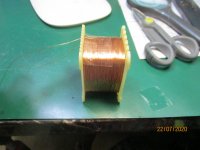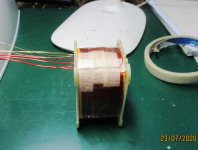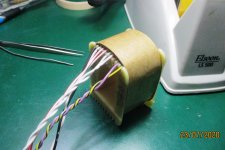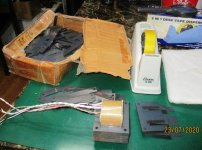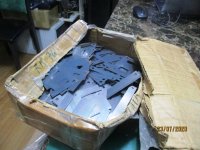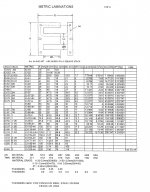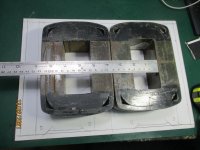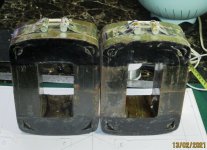Hi Mr Tony.
Some basic level questions, please if you can cooperate with me.
Before assembling the set, each individual lamination plate E and I has some insulating cover ... (some dielectric varnish for example). ?
the thin oxides at the surface served as insulation albeit no a perfect one, just use them...
For power transformers, there are many differences between using grain oriented and non-grain oriented lamination.
goss irons can run at higher flux densities with lower losses than say a noss...
i use the M18 grades 0.35 for power traffos and M6/Z11 0.35mm thick laminations for output transformers..
In transformers in general, it is mandatory that the each layer wire must occupy the entire width of the bobbin. ?
yes as much as possible, except in cases of high voltages, where creepage distance is observed....
Where do you buy and what are the specifications of the lamination you use? . Is the same for PT and OPT transformers ?
I have 0.5 millimeter non-oriented grain lamination available .... but I have my doubts regarding this, final operating temperature, noise, etc.
Can you help me to model a power transformer for TSEII 2A3.
It is now or never, I want to assemble the power transformer for a Tubelab SEII amp, with two 2A3, two 5842 and one 5AR4 valves.....accompanied by two OPT Trascendar 3K/8 ohms.
Several here have used Hammond 370 HX for Power Transformer....
Thanks in advance Mr Tony.
0.5mm thick will also do for power transformers, you need to run them lower flux densities though...
for a 2A3, filament power is 2.5vac x 2 amps or 10 watts total..
two 5842 is 6.3vac x 0.3 amps or 4 watts
5ar4 is 5vac x 2amps or 10 watts,
so for filaments alone you need 24 watts
for plate psu supply 300 vdc at 100ma or 30 watts..
so that is 54 watts in all
the primary of your power traffo needs 54/0.6 or 90 volt amperes
this is minimum, nothing stops you from using bigger..


